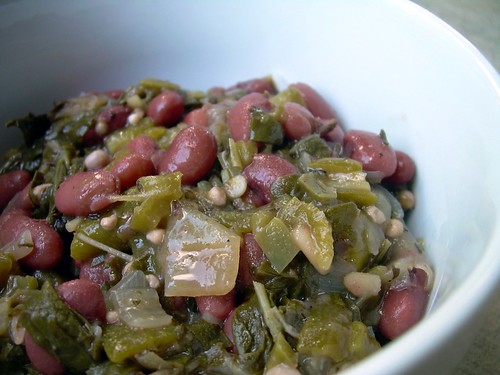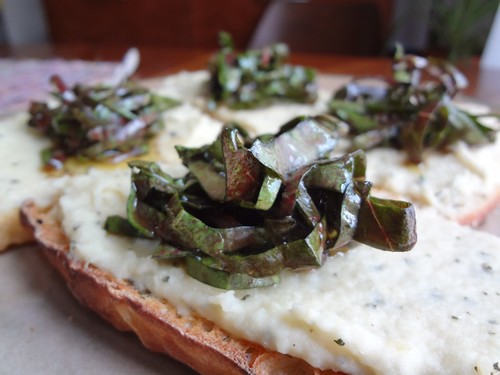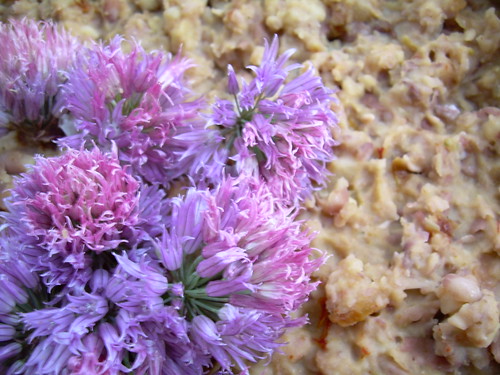
Traditionally, summer gumbos are thickened with okra and winter gumbos are thickened with
filé powder (dried and ground sassafras leaves--
instructions for making at home). This is a summer gumbo, but I'm going to keep an eye out for sassafras leaves (
ghosts and mittens!) to save for the winter. Also, I need to remember
gumbo z'herbes next time we have buttloads (
1 butt = 126 gallons) of greens that we don't know what to do with. Dedicated to Caitlin Bergo.
2 T. shortening (or margerine or oil)
2 T. all purpose flour
1 medium onion, diced
2 bell peppers, finely chopped (green or purple)
1 pint (10 oz by weight) okra
1 qt water
2 t. bouillon paste
1 big bunch chard (optional, or any other greens)
3 cloves garlic
1 T. lemon juice
1/2 t. liquid smoke
2 c. cooked red or black beans
1 T. thyme
2 bay leaves
dash ground allspice
dash ground cloves
2 t. salt (to taste)
First make the roux: In a large pot, heat the shortening and mix in the flour, stirring a lot. Cook the roux until it is as dark as you want it; a darker roux will have a stronger flavor that might obscure the okra flavor. But watch out, it is easy to burn, especially if you use margerine or butter instead of oil, shortening (or lard or clarified butter). Then, add in the chopped onion and garlic, saute for a bit (you might have to add more oil), then add green pepper and saute for a bit more. Then add the okra, the quart of water and the bouillon (or homemade stock). If you saute the okra, it might dry out, losing the mucilaginous effect. Chop the chard into thin strips and add to the pot, along with the cooked beans, lemon juice, liquid smoke, thyme, bay leaves, allspice, and cloves. Bring to a boil and simmer for 30 minutes. Add salt to taste. Serve over rice.
sidenote: pressure cooking beansI forgot to soak my beans overnight, so I decided to try pressure cooking them in our pressure canner. This is the first time we've tried cooking in the canner, but I figured I'd give it a try because it reduces the cooking time from 2 hours to 2 minutes! Now, you are still supposed to soak beans overnight before cooking them in the pressure cooker "for even cooking and to remove water-soluble, gas-producing starches." I did the "quick-soak" method which means you boil the beans for 2 minutes, turn off the heat and leave covered, go to the farmer's market and lay in the sun by the creek for an hour, then return home to find your beans are ready to be cooked for an additional 2 minutes at 15 psi. Apparently you should add 1 Tablespoon of vegetable oil to your beans to reduce the likelihood of froth or foam blocking the vent pipe (and never fill the vessel more than 1/2 full). One of these days I want to hook up a current transformer (CT) to our electric range to measure the energy savings using a pressure canner/cooker.





